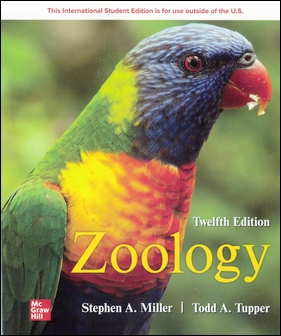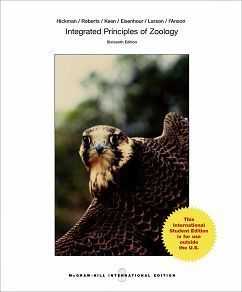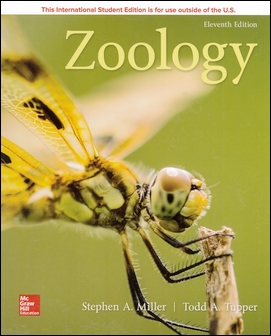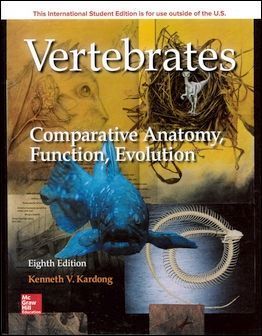書籍分類
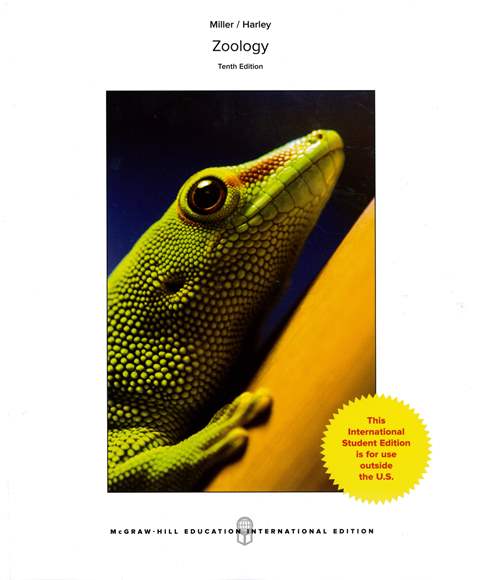
Zoology 10/e
作者:Stephen A. Miller, John P. Harley
原價:NT$ 1,380
ISBN:9781259251740
版次:10
年份:2016
出版商:McGraw-Hill
頁數/規格:619頁/平裝彩色
版次:10
年份:2016
出版商:McGraw-Hill
頁數/規格:619頁/平裝彩色
內容介紹 本書特色 目錄 作者介紹
- Description
The 10th edition of Zoology continues to offer students an introductory general zoology text that is manageable in size and adaptable to a variety of course formats. It is a principles-oriented text written for the non-majors or the combined course, presented at the freshman and sophomore level.
Introducing SmartBook! For the first time Zoology, 10th edition is supported by SmartBook, an online learning tool that merges an eBook with adaptive assessments, creating an individualized experience for the students, adapting to their learning.
- New Features
- Introducing SmartBook The 10th edition will be supported with SmartBook in Connect. SmartBook provides an electronic version of the text and contains adaptive assessments through the LearnSmart engine.
- Restructured Organization of Invertebrate Chapters
- The presentation of the invertebrates has been reorganized to follow the new phylogenetic classification/taxonomy of the Protostome animal groups. The changes in the TOC involve chapters 10-17 (see below), with chapters 10 and 13 having been completely reorganized, chapter 12 has been reorganized to reflect new interpretations of annelid phylogeny. Chapters 14 and 15 are reorganized in recognition of the validity of the Pancrustacea. Chapters 16 and 17 are reorganized to group echinoderms and hemichordates into a single ambulacrarian chapter.
- Lesser-known Phyla included in Zoology, 10e
- In the interest of maintaining a manageable text length, some smaller, lesser-known phyla were omitted in past editions. In the 10th edition, we include descriptions and phylogenetic relationships of these phyla in illustrated tables that have been inserted at the ends of chapters 9, 12, and 16. The inclusion of these tables in 10e will help students understand the amazing diversity within the animal kingdom.
-
Integrated Learning Outcomes
To help instructors with institutional measurement requirements, the tenth edition of Zoology provides learning outcomes for each major section in each chapter. "Learning Outcomes Reviews" at the end of each section reinforce important concepts students have just studied. A question at the end of "Learning Outcomes Review" asks students to think critically about what they have read and learned. -
Connect Zoology
Instructors using the new Connect Zoology can access auto-gradable and interactive assessment material tied to learning outcomes from the text. Students using Connect Plus also have access to an interactive eBook that includes live links to animations, videos and audio assets. -
New Digital Assets and Media Integration
Many of the sections within each chapter are linked to animations of biological processes and audio MP3 files. This media integration is indicated within the printed text by icons directing students to the media in Connect. - This text features an evolutionary and ecological focus, believing that these perspectives captivate students and are fundamental to understanding the unifying principles of zoology and the remarkable diversity within the animal kingdom. In this revision, the authors have taken a conservative, yet up-to-date, position on taxonomic and other challenges to traditional interpretations of zoological data.
-
Critical Thinking
Analysis and Application Questions" that have closed each chapter in previous editions have been carefully revised, and in some cases, completely rewritten. These questions ask students to think about, and apply, concepts they have learned in each chapter. - "Evolutionary Insights" boxes throughout the text provide more detailed examples of the evolution of animal organ systems and processes.
- "Wildlife Alert" boxes depict the plight of selected animal species or broader ecosystem issues relating to preserving various animal species. This feature increases student awareness of the need to preserve animal habitats and species. These readings have been updated as the status of the animals covered have changed.
- “How Do We Know” sections throughout the text offer students insight into how biologists have arrived at conclusions regarding a variety of biological processes.
Key Features
- Table of Contents
1 Zoology: An Evolutionary and Ecological Perspective
2 Cells, Tissues, Organs, and Organ Systems of Animals
3 Cell Division and Inheritance
4 Evolution: History and Evidence
5 Evolution and Gene Frequencies
6 Ecology: Preserving the Animal Kingdom
7 Animal Taxonomy, Phylogeny, and Organization
8 Animal-Like Protists: The Protozoa
9 Multicellular and Tissue Levels of Organization
10 The Smaller Lophotrochozoan Phyla
11 Molluscan Success
12 Annelida: The Metameric Body Form
13 The Smailler Ecdysozoan Phyla
14 The Arthropods: Blueprint for Success
15 The Pancrustacea: Crustacea and Hexapoda
16 Ambulacraria: Echinoderms and Hemichordates
17 Chordata: Urochordata and Cephalochordata
18 The Fishes:Vertebrate Success in Water
19 Amphibians: The First Terrestrial Vertebrates
20 Reptiles: Diapsid Amniotes
21 Birds: Reptiles by Another Name
22 Mammals: Synapsid Amniotes
23 Protection, Support, and Movement
24 Communication I: Nervous and Sensory Systems
25 Communication II: The Endocrine System and Chemical Messengers
26 Circulation and Gas Exchange
27 Nutrition and Digestion
28 Temperature and Body Fluid Regulation
29 Reproduction and Development
Glossary
Credits
Index
- Stephen A. Miller, College of the Ozarks-Professor Emeritus
John P. Harley, Eastern Kentucky University-Professor Emeritus



